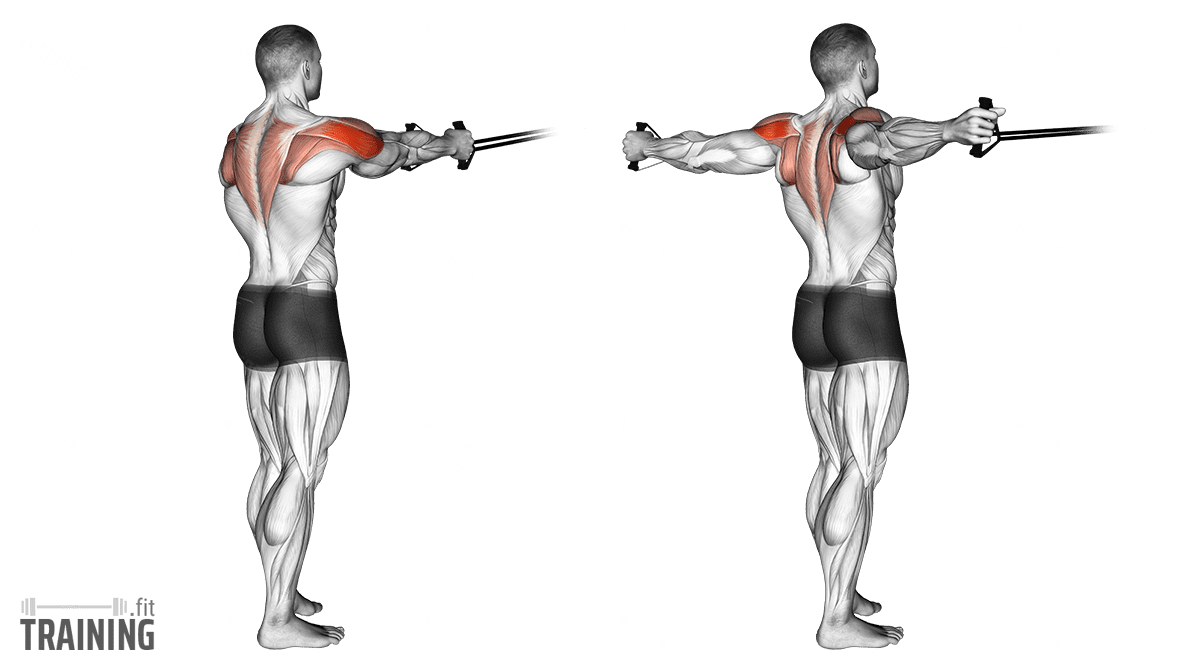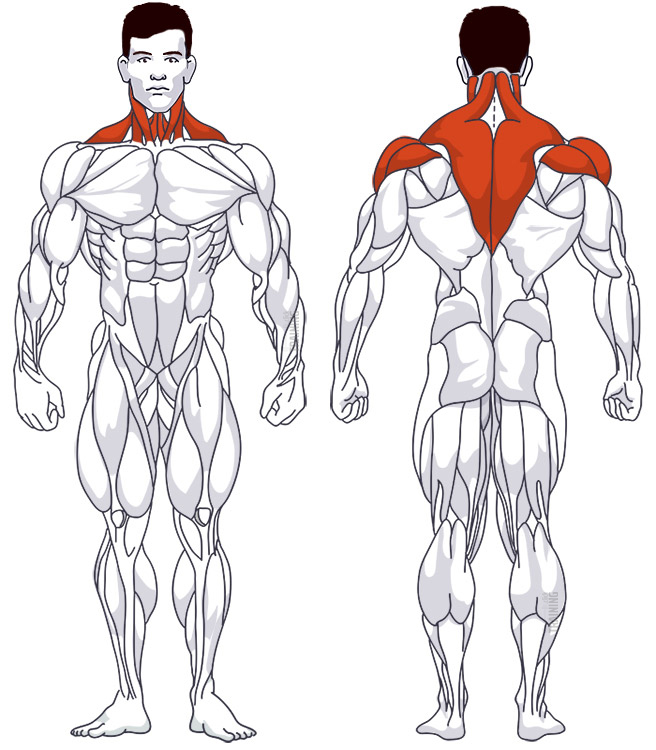Band Reverse Fly
Compound exercise, Body weightOverview

Main muscles
- Shoulder: Posterior deltoid muscle
(Musculus deltoideus, posterior deltoid muscle) - Neck: Trapezius muscle
(Musculus trapezius)
Training plans
Band Reverse Fly is a suitable substitute for similar exercises in or as a supplement to various training plans.
Band Reverse Fly: Basics and alternatives

Involved main muscle groups:
Band Reverse Fly
Band Reverse Flys are a fantastic exercise for your rear shoulders that you can do at home. It’s a variation of the regular Reverse Flys with dumbbells. The movement is pretty much the same: You lift the weight by spreading your arms out to the sides and back.
The main focus is on the rear deltoids (rear shoulder) and neck, making it a compound exercise.
As an alternative to the band variation, you can also perform the exercise on a machine, known as Reverse Butterfly.
Correct Execution
Just like with dumbbell reverse flys, you can perform the band exercise in various ways. One option is to secure the band at chest or shoulder height so you can do the exercise while standing.
In another variation, which doesn’t rely on specific environmental conditions, you place the band under your feet and bend forward. In this case, you need to pay attention to maintaining good back posture in addition to proper exercise form. It’s also a good idea to wear sneakers to prevent the band from cutting into your soles.
The following video shows the bent-over variation and provides step-by-step instructions.
Video Tutorial
Step-by-Step Instructions
Stand shoulder-width apart.
Place the band centrally under both feet.
Bend your upper body at a 45 to 90-degree angle forward. Form a slight hollow back and make sure to keep your back straight otherwise. Your arms should now be stretched forward or down (with the band ends in your hands).
Slightly bend your elbows. You’re now in the starting position.
Pull the band back by spreading your arms to the back. Keep the elbows at the same angle. Stop the movement before you have to squeeze your shoulder blades too much to continue.
Hold the position briefly and then move your arms back to the starting position slowly and controlled.
Common Mistakes
When bending over, make sure you don’t form a rounded back. Your back should be straight with a very slight hollow back.
Also, don’t spread your arms too far. Move them only as far as your shoulder blades don’t have to take over most of the movement. Once your shoulder blades significantly take over the movement, the muscle focus shifts from the shoulder to the back.
Avoid using momentum from your arms and don’t move your upper body during the execution. Keep your elbows bent at the same slight angle throughout the exercise.